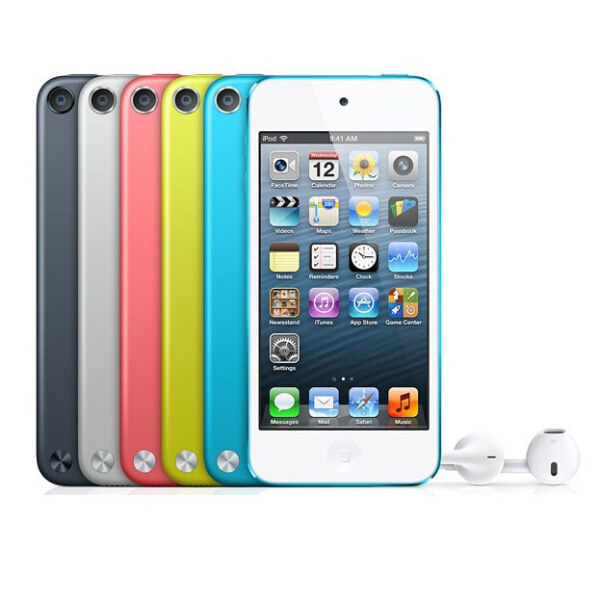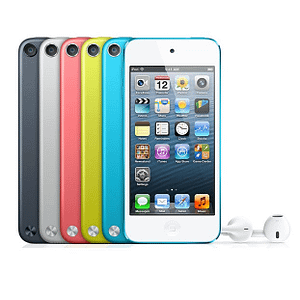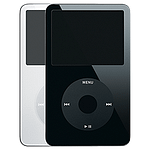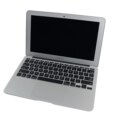- All Apple Devices
- iPod
- Apple iPod Touch 5th Generation
Apple iPod Touch 5th Generation

iPod Touch 5th Generation

Product Brand: Apple
3.5
Pros
- High-quality Retina display
- Lightweight and portable design
- Decent battery life
- Good audio quality
- Supports iOS apps and games
- Includes a rear-facing camera
- Affordable price
- Supports Siri voice assistant
Cons
- No cellular connectivity
- Limited storage capacity
- Older generation processor
- No Touch ID or Face ID
- No water resistance
- No GPS
Apple iPod Touch 5th Generation Review and Features
The fifth generation iPod Touch (stylized and marketed as the iPod touch and colloquially known as the iPod Touch 5G, iPod Touch 5, or iPod 5) was unveiled at Apple’s media event alongside the iPhone 5 on September 12, 2012. It was released on October 11, 2012.
A mobile device designed and marketed by Apple Inc. with a touchscreen-based user interface, it succeeded the 4th-generation iPod Touch. It is compatible with up to iOS 9.3.5, which was released on August 25, 2016.
Like the iPhone 5, the fifth-generation iPod Touch is a slimmer, lighter model that introduces a higher-resolution, 4-inch screen to the series with a 16:9 widescreen aspect ratio, similar to the iPhone 5, 5C, and 5S.
Other improvements include recording 1080p video and panoramic still photos via the rear camera, an LED flash, Apple’s A5 chip (the same chip used in the iPad Mini (1st generation), iPad 2, and iPhone 4S) and support for Apple’s Siri.
The fifth-generation iPod Touch was released with more colour options than its predecessors. It initially featured a black screen and slate back and a white screen with five back colour options, including silver, pink, yellow, blue, and Product Red; however, on the release of the iPhone 5S, the slate colour was changed to space grey, and all the other colours remained unchanged.
The fifth generation iPod Touch features the Apple A5 chip, similar to the iPhone 4S, iPad 2 and iPad Mini. The chip comprises a 1 GHz dual-core ARM Cortex-A9 processor and a PowerVR SGX543MP2 (2-core) GPU making it faster than the fourth generation iPod Touch, which uses the Apple A4 chip.
Storage capacities are available at 32 or 64 GB, with a 16 GB announced at a later date to replace the previous generation.
The Retina Display of the iPod is similar to the one on the iPhone 5, measuring 1,136 by 640 pixels with an aspect ratio of almost exactly 16:9. Measuring 4 inch diagonally, it has a display size of 6.7 square inch and a pixel density of 326 PPI which remains the same as the fourth generation.
The fifth-generation iPod Touch’s finish features an aluminium unibody made from the same kind of anodized aluminium used in the MacBook line. With a new iSight camera and LED flash, the iPod Touch includes a new feature known as the iPod Touch Loop.
At the bottom left corner of the back of the iPod Touch, there is a button that can be pressed to allow a wrist strap to attach to the iPod Touch. Other changes to the iPod Touch include the addition of colours and the return of the black Wi-Fi antenna.
A 16 GB version that did not include the iSight camera LED flash and Loop was released on May 30, 2013. This model was replaced with a 16 GB model of the original design on June 26, 2014.
Full Technical Specifications
General Technical Specifications
| Device Type | Portable Media Player |
| Released | 11 October, 2012 |
| Status | Discontinued |
| Predecessor | 4th-generation iPod Touch |
| Successor | iPod Touch (6th generation) |
| Generation | 5th |
| Colors | Space grey, silver, pink, yellow, blue and Product red |
| System Requirements |
Apple ID (required for some features) Internet access Syncing with iTunes on a Mac or PC requires: Mac: OS X v10.6.8 or later PC: Windows 7; Windows Vista; or Windows XP Home or Professional with Service Pack 3 or later iTunes 10.7 or later |
| Input and Output |
Multi-touch touchscreen display Volume buttons Microphone Built-in speaker Voice control 3-axis gyroscope 3-axis Accelerometer |
| iPod's Processor Type | Dual-core Apple A5 |
| iPod's Processor Speed | ARM dual-core Cortex-A9 Apple A5 1 GHz (underclocked to 800 MHz) |
| RAM | 512 MB |
| GPU GPU (Graphics Processing Unit) is a single-chip processor designed to rapidly manipulate and alter memory to accelerate the creation of images in a frame buffer intended for output to a display, This includes things such as lighting effects, object transformations, and 3D motion. | PowerVR SGX535 GPU |
| iPod's Internal Memory | 8, 16, 32 or 64 GB flash memory |
| Connectivity | USB, Wi-Fi 802.11n 2.4 GHz and 5 GHz. Bluetooth: 4.0 |
| FM Radio Support | No |
| Audio Technology Features |
Camera, Photos, and Video 5-megapixel iSight camera Autofocus Tap to focus video or still images Backside illumination Hybrid IR filter Five-element lens LED flash ƒ/2.4 aperture Face detection Panorama HDR HD video recording (1080p) up to 30 frames per second with audio FaceTime HD camera with 1.2MP photos and HD video (720p) up to 30 frames per second Video stabilization Tap to control exposure for video or stills Photo and video geotagging over Wi-Fi Audio Playback Frequency response: 20Hz to 20,000Hz Audio formats supported: AAC (8 to 320 Kbps), Protected AAC (from iTunes Store), HE-AAC, MP3 (8 to 320 Kbps), MP3 VBR, Audible (formats 2, 3, 4, Audible Enhanced Audio, AAX, and AAX+), Apple Lossless, AIFF, and WAV TV and Video H.264 video up to 720p, 30 frames per second, Main Profile level 3.1 with AAC-LC audio up to 160 Kbps, 48kHz, stereo audio in .m4v, .mp4, and .mov file formats MPEG-4 video up to 2.5 Mbps, 640 by 480 pixels, 30 frames per second, Simple Profile with AAC-LC audio up to 160 Kbps per channel, 48kHz, stereo audio in .m4v, .mp4, and .mov file formats Motion JPEG (M-JPEG) up to 35 Mbps, 1280 by 720 pixels, 30 frames per second, audio in ulaw, PCM stereo audio in .avi file format AirPlay Mirroring to Apple TV support at 720p AirPlay video streaming to Apple TV (3rd generation) at up to 1080p and Apple TV (2nd generation) at up to 720p |
| Headphone Type | 3.5mm Audio jack |
| Display Info |
4-inch (diagonal) widescreen display with Multi-Touch IPS technology Retina display 1136-by-640-pixel resolution at 326 pixels per inch 800:1 contrast ratio (typical) 500 cd/m2 max brightness (typical) Fingerprint-resistant oleophobic coating |
| Dimensions |
Height: 4.86 inch (123.4 mm) Width: 2.31 inch (58.6 mm) Depth: 0.24 inch (6.1 mm) |
| Weight | 3.10 ounces (88 grams) |
| Camera | Yes |
| SIM SIM (Subscriber Identity Module) is a small card that contains mobile network subscriber's account information. This allows the phone using the card to attach to a mobile network. The SIM card is most commonly associated with GSM and UMTS mobile networks. Moving a SIM card from one phone to another allows a subscriber to switch mobile phones without having to contact their mobile network carrier. SIM cards can also be used by a phone to store limited amounts of data, such as phone numbers and text messages. | No SIM |
| Battery | 1030 mAh rechargeable lithium-ion battery |
| Navigation | Multitouch screen |
Disclaimer Note
We can not guarantee that the information on this page is 101% correct.









